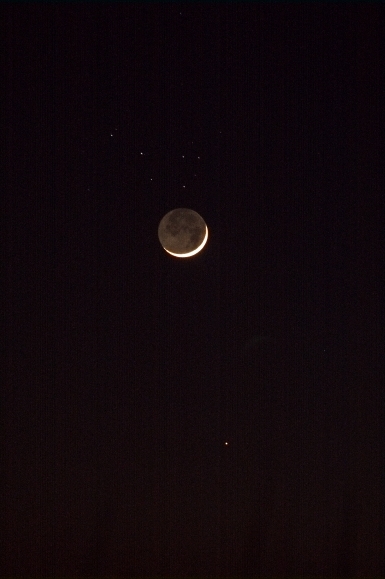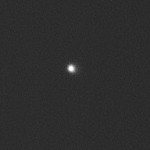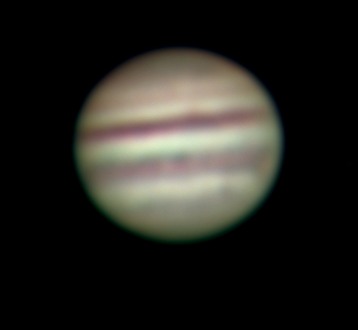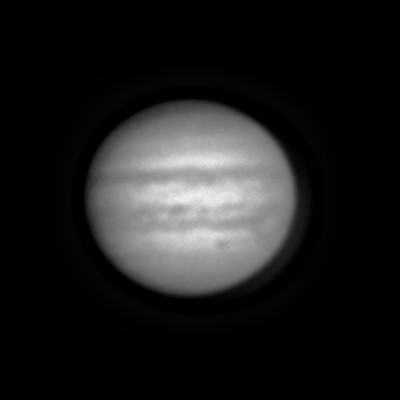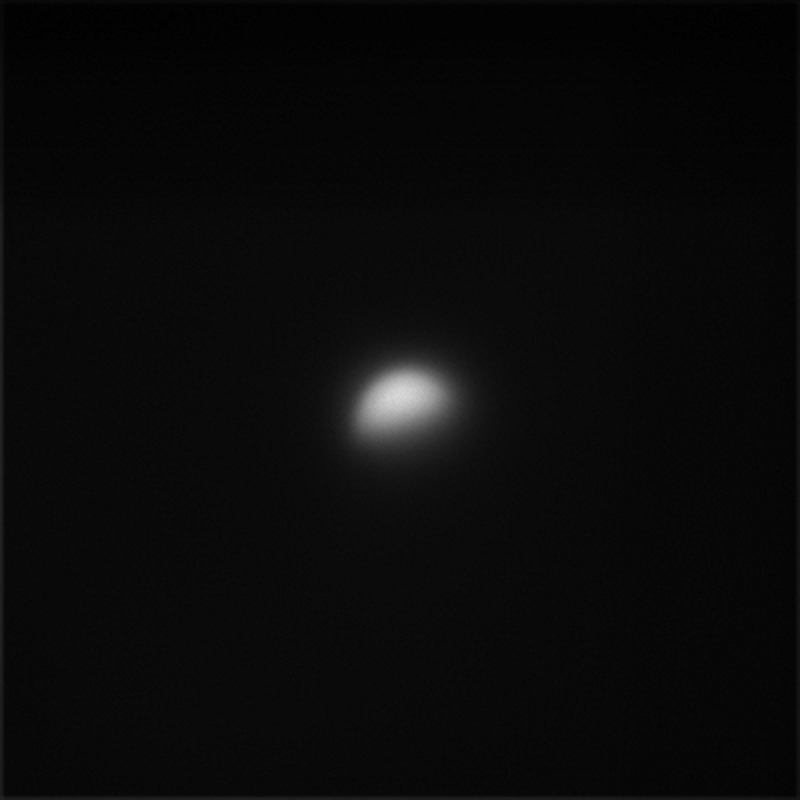Whilst waiting for the sky to darken enough to image M13, I put the webcam on the 9.25 and took a 3 minute video of Saturn against the twilight sky.
I converted the avi file into individual bitmaps using VirtualDub and the then centred the planet in the frame, cropped the image and carried out an initial quality assessment all in one step using Ninox (previously called PPMcentre). Having ordered the frames by quality it is then easy to delete the ones worst affected by atmospheric conditions.
Using Registax, I then stacked the best 300 frames and sharpened the result which is here:
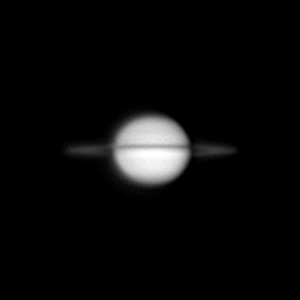
The rings have opened up slightly from their edge-on appearance earlier this year.
